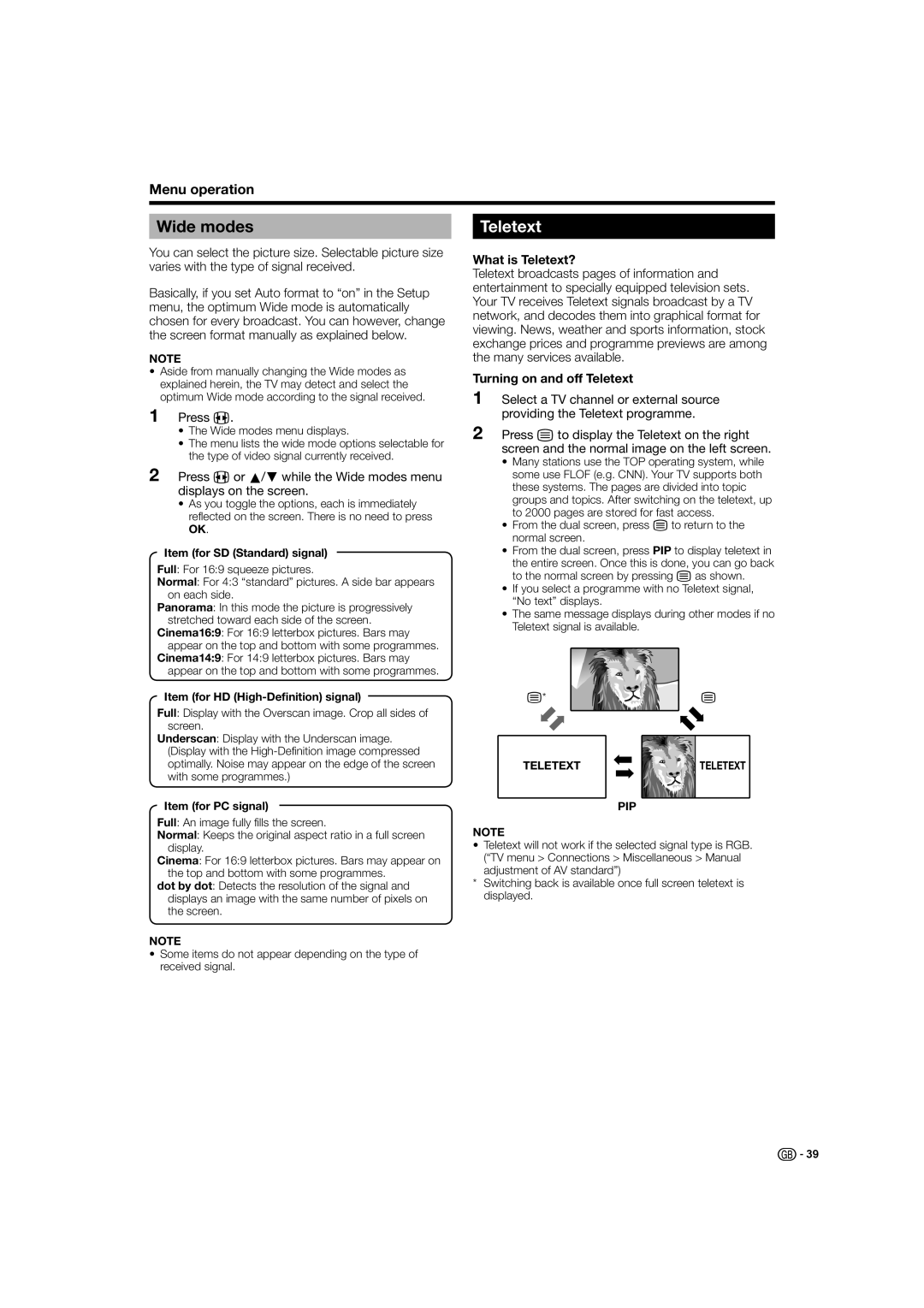
Menu operation
Wide modes
You can select the picture size. Selectable picture size varies with the type of signal received.
Basically, if you set Auto format to “on” in the Setup menu, the optimum Wide mode is automatically chosen for every broadcast. You can however, change the screen format manually as explained below.
NOTE
•Aside from manually changing the Wide modes as explained herein, the TV may detect and select the optimum Wide mode according to the signal received.
1Press f.
•The Wide modes menu displays.
•The menu lists the wide mode options selectable for the type of video signal currently received.
2Press for a/b while the Wide modes menu displays on the screen.
•As you toggle the options, each is immediately reflected on the screen. There is no need to press OK.
Item (for SD (Standard) signal)
Full: For 16:9 squeeze pictures.
Normal: For 4:3 “standard” pictures. A side bar appears on each side.
Panorama: In this mode the picture is progressively stretched toward each side of the screen.
Cinema16:9: For 16:9 letterbox pictures. Bars may appear on the top and bottom with some programmes.
Cinema14:9: For 14:9 letterbox pictures. Bars may appear on the top and bottom with some programmes.
Item (for HD (High-Definition) signal)
Full: Display with the Overscan image. Crop all sides of screen.
Underscan: Display with the Underscan image. (Display with the
Item (for PC signal)
Full: An image fully fills the screen.
Normal: Keeps the original aspect ratio in a full screen display.
Cinema: For 16:9 letterbox pictures. Bars may appear on the top and bottom with some programmes.
dot by dot: Detects the resolution of the signal and displays an image with the same number of pixels on the screen.
NOTE
•Some items do not appear depending on the type of received signal.
Teletext
What is Teletext?
Teletext broadcasts pages of information and entertainment to specially equipped television sets. Your TV receives Teletext signals broadcast by a TV network, and decodes them into graphical format for viewing. News, weather and sports information, stock exchange prices and programme previews are among the many services available.
Turning on and off Teletext
1Select a TV channel or external source providing the Teletext programme.
2Press mto display the Teletext on the right screen and the normal image on the left screen.
•Many stations use the TOP operating system, while some use FLOF (e.g. CNN). Your TV supports both these systems. The pages are divided into topic groups and topics. After switching on the teletext, up to 2000 pages are stored for fast access.
•From the dual screen, press mto return to the normal screen.
•From the dual screen, press PIP to display teletext in the entire screen. Once this is done, you can go back to the normal screen by pressing mas shown.
•If you select a programme with no Teletext signal, “No text” displays.
•The same message displays during other modes if no Teletext signal is available.
m*m
TELETEXT | TELETEXT |
|
|
PIP
NOTE
• Teletext will not work if the selected signal type is RGB. (“TV menu > Connections > Miscellaneous > Manual adjustment of AV standard”)
*Switching back is available once full screen teletext is displayed.
![]()
![]() 39
39
